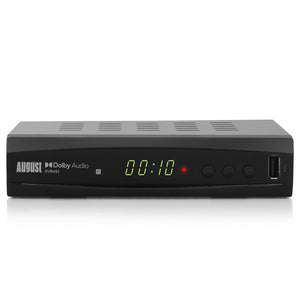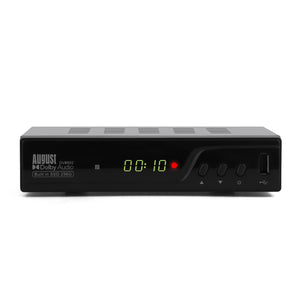Being able to pause live TV and "whizz through the adverts" (Most likely an expression borne of my London upbringing) was once itself the pinnacle of entertainment innovation.
In the decade that followed, technology came a long way, however. From the way we record, the quality of the channels we are recording, to the storage we record to!
Utilising one of the more recent breakthroughs in storage tech, August International have incorporated an M.2 SSD into their latest Set Top Box. But what is an SSD and why does it make such a difference to a set top box TV recorder of all things...?
What is HDD vs SSD Storage?
First off, HDD
Right off the bat we can contextualise that against a much more common acronym - HDD. We're all used to saying "Hard Drive". Even with minimal tech knowledge the role of hard drives in personal and professional life is unavoidable (for now).
A "hard drive" is just the common name for the "HDD" or "Hard Disc Drive". These are digital storage devices which let you download cat pictures off the internet, save PDF instruction manuals and create collages of your holiday pics.
All that data is written to a disc, which is housed in a special unit as its own drive, rather than the sort of disc you put in a DVD player.
A hard disc drive has all the writing equipment it needs built-in, kind of like a CD player that can change what music is on the CD you put in!
So, what's an SSD then?
Just like a hard drive, an SSD can write and read data. Unlike a HDD, the SSD doesn't use a disc!
If a HDD is like a CD player which can edit the disc you put in, then an SSD is like an MP3 player that can edit the MP3 files you put on!
Just like a HDD, an SSD is designed to electronically take and store data, in a way that enables it to be reorganised, edited, moved or removed! It's just an SSD does this all entirely electrically, with no physical disc writing or "moving parts" that you find in a disc drive.
Why Choose SSD for TV Recording
With all the chunky jargon out the way, why on earth does all of that make your set top box better?
Well, to summarise:
- No waiting for write and read speeds. An SSD uses instantaneous electronic communication without needing to rely on the spinning speed of the disc or needle like in a HDD. This means faster writing speeds so you can record within a second of pressing the button.
- More capacity in a smaller space. Rather than needing space for a whole disc drive, the unit can be far smaller and lighter. Despite this, the digital storage space can be much higher; A 1TB M.2 is as cheap as a 500GB (half the size) HDD! This means you can record hundreds of hours of TV.
- Higher-quality recordings. Due to the increased speed and capacity, HD channels can be recorded as easily as SD. This means you can authentically record in 1080p full HD without worrying over flickering or running out of space.
Budget SSD TV Boxes with Recording
Renowned manufacturer August International, responsible for the popular DVB482 set top box and DTA240 aerials, have begun sale of the DVB502. DVB502 skips the need for a USB, and instead uses an inbuilt SSD.
Not only that, but it's an M.2, which is an even more space-saving SSD type made for maximum speed and storage size in as small a physical space as possible!
With DVB502 you can record 100+ hours of TV right out the box, no USB storage needed.





Leave a comment